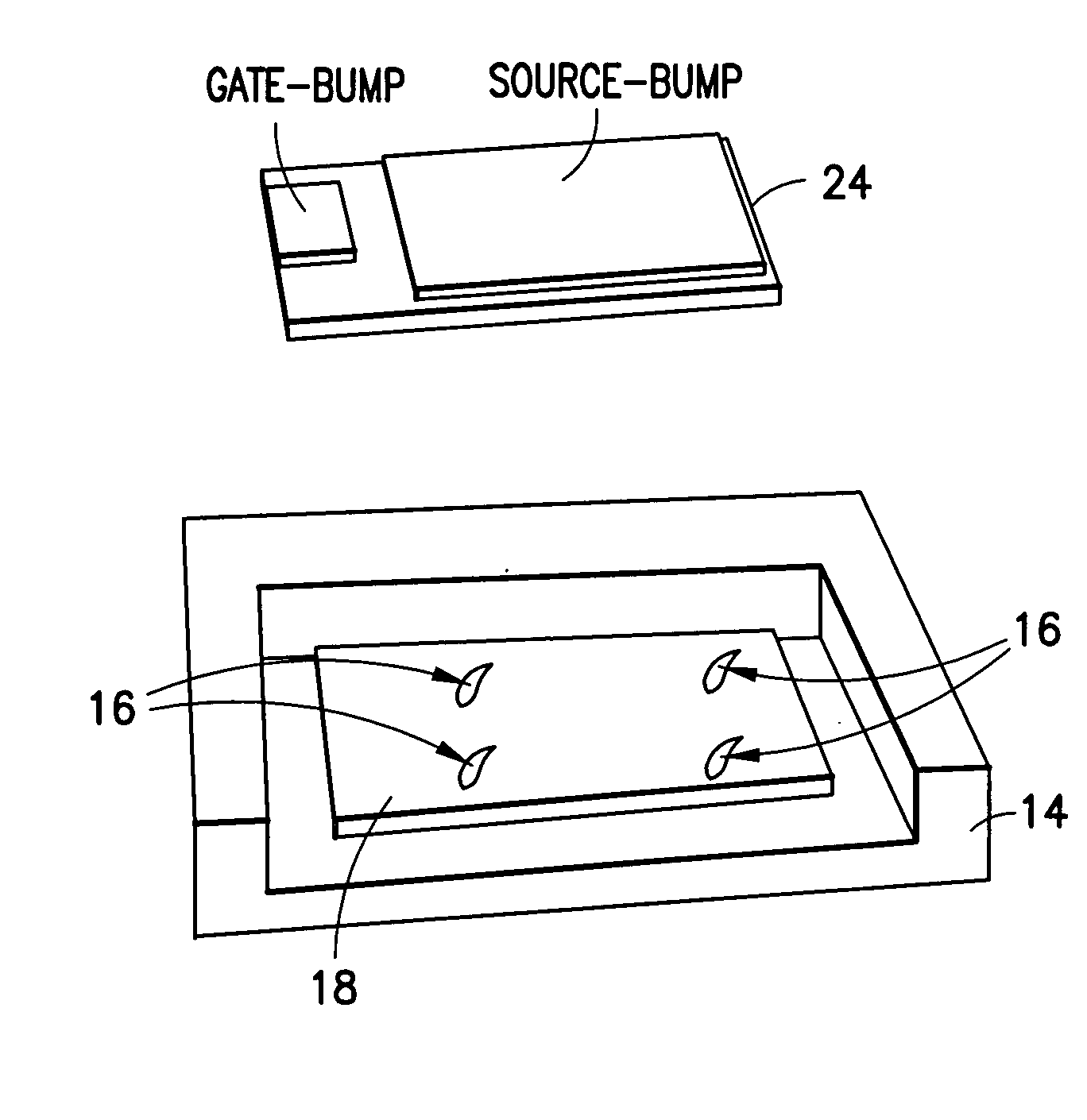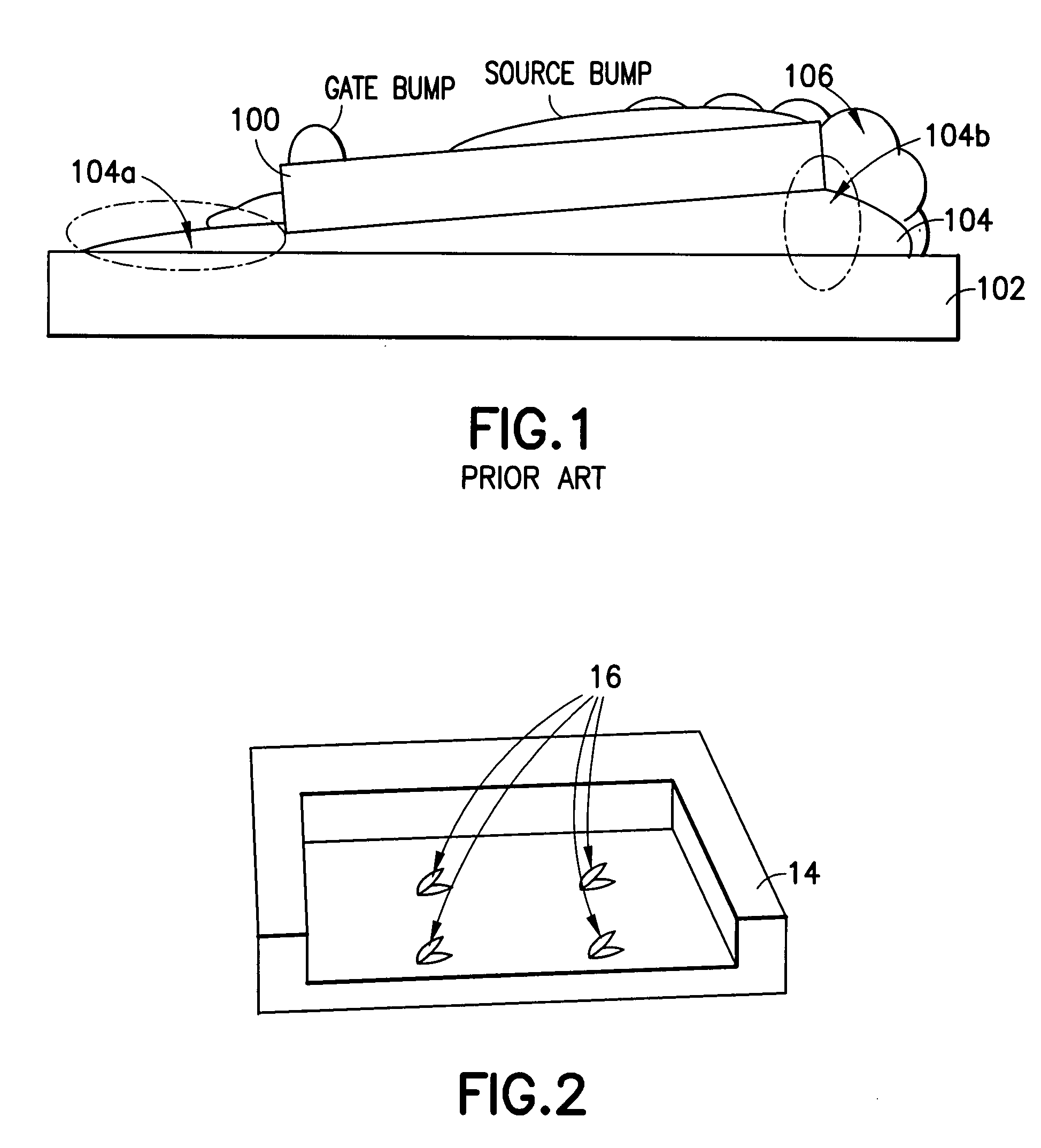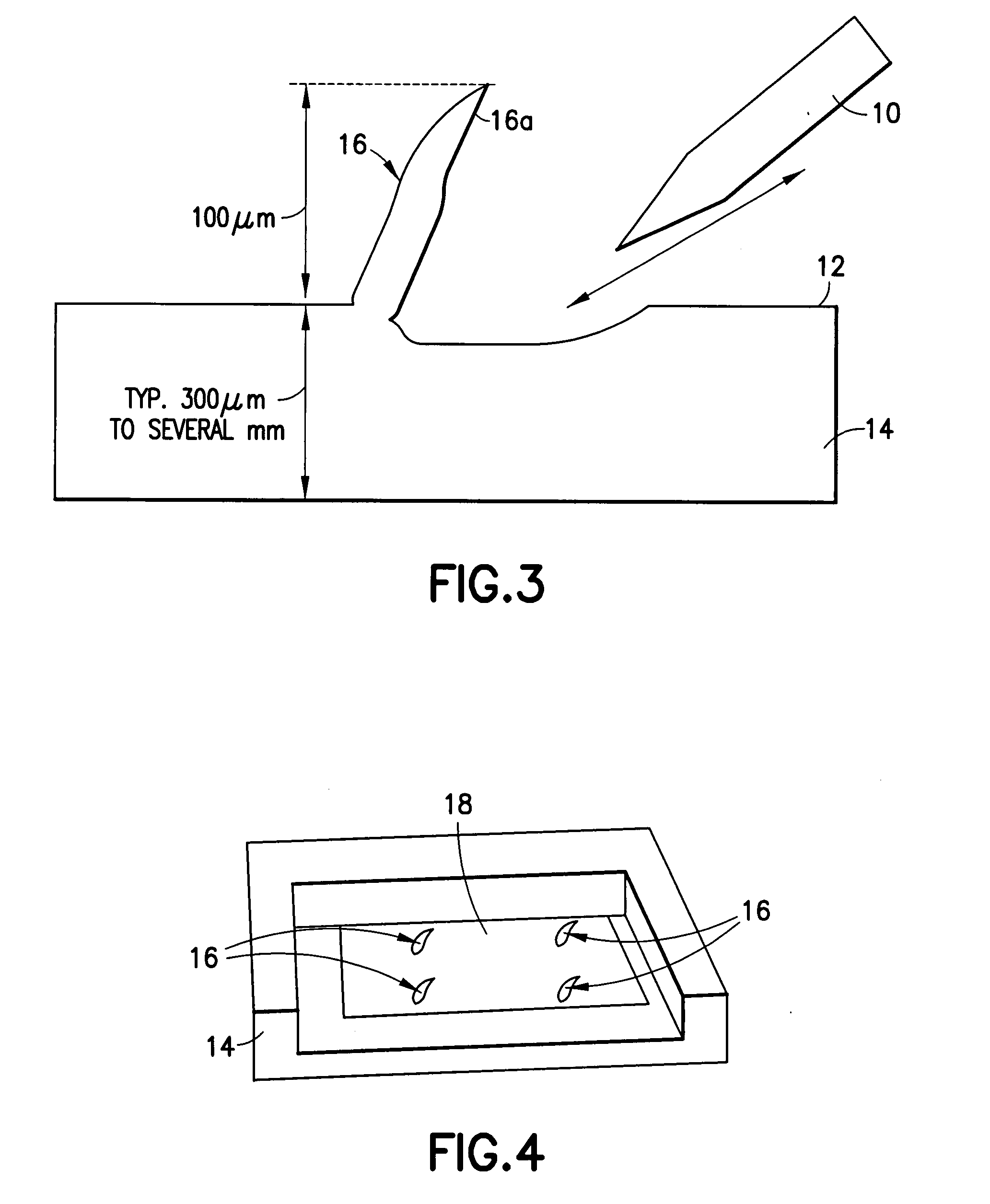In particular, the power and current carrying capability of MOSFETS and IGBT's are often limited by insufficient package performance.
The thermal and electrical resistance of the package results in power losses and corresponding heating of silicon beyond the limits thereof In addition, the
inductance of the package also results in certain limits for use with high switching currents.
In particular, parasitic package inductance may result in inductive over-
voltage that can destroy the silicon device (Si-device).
However, this approach does not provide for very close control of solder thickness.
For example, die movement during the
liquid phase of the
solder paste often results due to creeping or flow of the liquid solder.
Such
creep and / or flow cannot be well predicted.
Further, different
wetting of the
solder paste to the substrate or leadframe may result in a thinner or thicker distribution of solder, and thus, variations in the thickness of the final solder layer.
However, such techniques are generally expensive and don't completely prevent die movement.
For example, such techniques do not address problems that can arise when the die is tilted.
Further, when such techniques are used, it is difficult to change the die, solder pattern or solder thickness without changing the tooling and other equipment used, which can be expensive and
time consuming.
Shifts in the position of the die result in the die not being properly postioned relative to the circuit pattern and / or may result in the die being tilted in one direction or the other.
Further, chemical reactions between the flux and the contact surfaces can result in bubbling of the solder when in the
liquid phase.
This is another source of unwanted movement of the die.
These problems may not reduce yield in certain applications.
That is, the movement of the die may not be a problem in certain applications, however, precise positioning of the die may be critical in other applications.
Even small movements of the die can be a problem for wire bond processes to fine-structure pads or when the Si-device is to be flip-
chip soldered with narrow tolerances in bump position (height and location).
One other problem with present solder paste technology is the residue of the flux that is typically stuck to the die or substrate after the solder process.
This residue may be hard to remove, and if not removed, may cause problems with
wire bonding or other electrical contact techniques.
Thus, the removal of the flux is often necessary, and thus represents additional expense.
However, this technique still makes it difficult to control the thickness of the solder layer.
Further, the die also moves when the solder melts, which also results in variation of the solder thickness as noted above.
The problems described above and illustrated in FIG. 1 are common in all conventional Si-die attachment techniques.
However, in applications where a single device needs to be soldered precisely in a
metal housing, like a
MOSFET in the DirectFET® line of products noted above or in the horseshoe-shaped can mentioned in the co-pending application entitled
PACKAGE FOR
HIGH POWER DENSITY DEVICES mentioned above, these variations are unacceptable.
However, as described above, conventional solder bonding does not provide for precise enough control to allow for its use in the DirectFET® line of products.
In particular, the DirectFET® line of products require that the gate bumps and source bumps be in a precise position and perfectly level with respect to the metallic can, which are problems with the
soldering techniques described above.
While the positional fixation elements of Kaiser may be useful to position the second component, the mandrel tool used to make them may not always provide an equal accumulation of material, and thus, the positional fixation elements may not provide a stable support for the second component.
 Login to View More
Login to View More  Login to View More
Login to View More 









